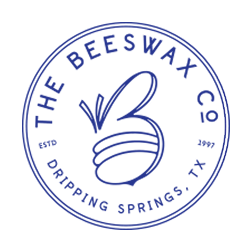Imported beeswax has been tapped to help fill consumers’ growing appetite for beeswax products. But just as with honey, its cousin product, not all beeswax is what it appears to be. Imported beeswax, in particular, can contain damaging impurities and dangerous toxins. But because the industry is vastly unregulated, it’s nearly impossible for those outside the domestic beeswax industry to spot the differences.
What do those in the industry wish you knew about imported beeswax? How can you spot the red flags yourself?
We periodically update the following report on imported beeswax for our wholesale clients, but it’s great info for consumers, too. If you love beeswax candles and products or use beeswax to make your own products, do yourself a favor and take a few minutes to educate yourself about imported beeswax.
A Flood of Inferior Imported Beeswax
It’s an exciting time for beeswax wholesalers. We’ve witnessed the market for its use in cosmetics, natural candles, pharmaceuticals, foods, and other products rapidly expand. Honeybee colonies in the U.S. are buzzing over time to satisfy demand. The number of managed honey bee colonies in the U.S. has increased significantly, nearly doubling from 2.67 million in 2022 to a record high of 3.8 million in 2024.
But high demand and price competition mean many U.S.-based business owners in search of large-scale wholesale beeswax are finding it overseas. China is by far the biggest exporter of beeswax to the U.S. and other countries.
Beeswax is a premier wax product that is more expensive than synthetic waxes like paraffin, so finding a “deal” on wholesale beeswax is hard to pass up. However, price should not be the only determining factor for purchasing quality beeswax.
Just as you may have heard about the dangers of imported honey, imported beeswax, too, can be adulterated, contaminated, inferior, or mislabeled. In many cases, buyers and consumers have no obvious way to know if the imported beeswax they’re holding in their hands is what they’ve been told it is.
That’s scary. It’s frustrating (to us, too). But there are ways to help mitigate that risk.
Pure Beeswax: A Brief History
Beeswax is a valuable commodity used in a variety of products worldwide and has been since the time of ancient Egypt, Greece, Rome and China. One of the earliest-known cases of human interaction with beeswax was found in a 6,500-year-old tooth, in which a cavity was filled with beeswax. Following the introduction of beeswax candles to churches at the beginning of Christianity in Europe, the Roman Catholic Church mandated that only 100% beeswax candles be used in worship because beeswax represented purity. (Today, for cost-savings and convenience, the recommendation is that specific altar candles, in particular, be at least 51% beeswax.)
The production and selling of beeswax and beeswax candles was good business until the 19th century. It was at this time when paraffin wax and other petroleum-based substances and additives were introduced. At that point, beeswax lost its stronghold in the market and became a niche product.
As natural and eco-friendly products become more mainstream again, however, beeswax is enjoying a resurgence. Consumers today are rediscovering the benefits of beeswax candles over paraffin and even other natural waxes like soy. In addition to it being a popular candle wax, beeswax is used in dozens of product categories. Among them are:
- Beeswax in cosmetics, including skin care products and lip balm.
- Beeswax in food production, including chewing gum and coating cheese.
- Beeswax in pharmaceuticals, including soft gelatin capsules and tablet coating.
But here’s the rub: For beeswax to make good on its reputation of being natural, healthy, and non-toxic, it needs to be in its purest form. That’s where the dangers of imported beeswax hold the greatest risks. To make high-quality beeswax, bees need just the right conditions: healthy reproduction and brood rearing (egg laying), the presence of a queen, the correct temperatures, abundant pollen, an environment free from pollution and toxins, and so on. These factors weren’t an obstacle in the past. But, as you can imagine, urbanization and industrialization have made these ideal conditions harder to achieve.

The Beeswax Industry’s Dirty Little Secret
The beeswax industry remains largely unregulated, which means that producers, including those in the U.S., can (and do) make unsubstantiated claims about their products without repercussions. This has led to questionable practices, with some countries completely misrepresenting their standards entirely.
< p>Some of the worst practices include:- Using pesticides and contaminants banned in the U.S. but still present in the exporting country.
- Following inferior bee farming practices, including feeding bees sugar water instead of allowing the bees to forage naturally.
- Cutting pure beeswax with additives like paraffin to dramatically reduce production costs.
- Labeling beeswax pure or organic when it’s not, a practice that’s surprisingly accepted in some countries.
- Insufficient or inconsistent cleaning and filtration of the beeswax, which means the contaminants that are said to have been removed are not.
Contamination Risks of Imported Beeswax
The bee industry faces contamination from two distinct sources: the environment and agriculture. Environmental contaminants—which can include heavy metals, radioactive materials, and organic contaminants—can reach the raw materials of beeswax (nectar and pollen) by air, water, and soil. For instance, a Yale University study indicates that high atmospheric carbon dioxide levels can reduce the nutritional value of pollen, which may impact the production of bee products.
One major concern here is contamination due to organic compounds like polychlorinated biphenyl (PCB) originating from motor oil, coolants, and lubricants produced before 1980. A 2006 Swiss Bee Research Centre study points out that these materials can persist in the environment for many years.
“These substances are still present in the environment and can contaminate plants and, thus, the bees and their products. The quantities found in honey are low and safe, while those found in wax are higher,” the study author points out.
Even more profound is the widespread agricultural contamination of imported beeswax. Pesticides applied to crops in the field can lead to contamination. These can include insecticides, herbicides, bactericides, fungicides, and acaricides.
Pesticides are also applied to control bee predators directly. The most damaging of these predators is the varroa mite. Varroa mites are parasitic mites that attack and feed on honeybees. Synthetic acaricides, which are pesticides used to control the mites, are toxic and highly persistent compounds. These synthetic acaricides, specifically, accumulate and persist in beeswax more than in any other bee product.

Countries like the U.S. have started regulating the use of synthetic acaricides to ensure safe use with minimal acaricide accumulation in bee products. Alternatively, the use of organic pesticides, or biopesticides, that are effective against mites and safe to use on bees can be used. For example, natural acaricides like organic acids and thymol are good alternatives to synthetic acaricides. When natural acaricides are used properly, the residues they leave behind are lower and safer. The Swiss study and others that we cite at the end of this article give additional information.
Preventing the contamination of beeswax and other bee products seems to go hand-in-hand with strict regulation. However, there is no global standard for pesticide regulation. The U.S. certainly has a long way to go in this area itself. Where pesticide regulation is particularly weak or lacking, international suppliers are likely shipping contaminated beeswax, which inevitably is passed on to the consumer. For example, in 2017, China was the largest consumer of agricultural chemicals in the world, accounting for 30% of the world’s fertilizer and pesticide usage on only 9% of the world’s cropland.
Inferior Quality and Cutting
When a person has a nutritious diet and lives a healthy lifestyle, they increase their chances of thriving. The same is true for bees. Many of the same countries that rely the most on pesticides and other contaminants are also suffering a decline in bee population. China is, yet again, an unfortunate example. The country experienced such declines in bee health that by the late 1990s, the bee population in some areas had dwindled to zero, famously forcing apple farmers to pollinate their crops by hand.
However, production of bee products has continued to rise. How? Studies are lacking, but there has been speculation among experts for decades about controversial widespread beekeeping practices being used, including feeding honeybees sugar water instead of letting them forage naturally. What can be said for sure is that poor bee health leads to poor beeswax quality.
Adulteration or “cutting” is also a major issue when it comes to buying imported beeswax. Mixing pure beeswax with a product like paraffin significantly reduces material costs, and it can help supplement beeswax supplies when the quality and quantity of beeswax are low. A study out of Belgium found that, in recent years, beeswax adulteration with paraffin and/or stearin (a glyceryl ester of stearic acid) has become a growing and alarming concern. The most heartbreaking factor is that the practice may be leading to even lower-quality bee colonies and outputs. In fact, adulteration levels as low as 5% and 7.5% of stearic and palmitic acids, respectively, were found to have led to brood mortality rates above 45%.
Thankfully, many instances of overtly adultered beeswax can be spotted as long as you know what you’re looking for. The section on evaluating beeswax samples will teach you how.
The “Organic” Issue
Many of our customers love buying organic. We do, too. Buying certified organic products can be a great way to ensure that what you’re consuming (or breathing in or putting onto your skin) is good for you. But legitimately organic beeswax is nearly impossible to produce. That’s because honeybees—when allowed to live and forage naturally—really get around. They’ve been known to travel from a half mile to more than 8 miles away from the hive. What beekeeper can ensure their bees will only be exposed to organic plants within an 8-mile radius of their hives? Not many.
If imported beeswax is labeled organic, though, doesn’t it need to be, well, organic? We genuinely wish that were the case.

However, under USDA rules, while a company importing a product labeled “organic” must verify that it has come from a supplier that has a “USDA Organic” certificate, the product does not need to be traced back to the farm to verify the claim. In 2017, a report shared by the Washington Post showed how the organic certification process isn’t fail-proof. A consignment of soybeans originating from the Ukraine and shipped through Turkey was fraudulently labeled organic and was distributed to end users months before the fraud was uncovered.
The Post concluded that “Even when the USDA has responded to complaints of questionable imports, action has come too late to prevent the products from reaching consumers.
The sad truth is that some countries allow producers to label certain products like beeswax as being organic when, in fact, they may be more contaminated than a typical non-organic sample from the U.S. Whether labeled organic or not, it’s nearly impossible for consumers and wholesalers to tell how pure the product is. Even in the U.S., regulation of beeswax production is virtually non-existent.
So how can you ever know what you’re getting?
How to Be a Wise Consumer
To ensure the beeswax you purchase is of good quality, you need to retrace its journey back to the hive. Beeswax suppliers should be able to tell you the source of their raw beeswax. They should also be able to describe the process the beeswax goes through to be cleaned and filtered, especially if they claim it’s pure, food grade, or organic.
To help uncover the purity of your product, ask your beeswax supplier the following questions:
- Do you use any imported beeswax in your products? If so, how can I be assured that the purity of the beeswax is what you say it is?
- How do you source your beekeepers? Do you know what their standards are when it comes to ensuring their beekeeping practices are reputable?
- Is your beeswax “cut” with additives like paraffin?
- How is the beeswax filtered and processed?
- Can you send me a sample of your beeswax before I make a decision?
If your beeswax supplier struggles to answer any of these questions, use caution in proceeding. As you can imagine, it can be downright impossible for some imported beeswax suppliers to pass this test.
How to Evaluate a Beeswax Sample
If your beeswax supplier does provide a sample, closely evaluate the following:
- Color and Scent – If you’re purchasing yellow beeswax with natural color and honey smell preserved, make sure it looks and smells as expected. Pure beeswax should have a faint honey scent. You may even be able to smell traces of what the bees pollinated – prairie grasses, wildflowers, etc. Avoid anything that smells like chemicals or plastic, which would mean the beeswax is low quality or has been adulterated with another substance like paraffin. One easy test to remember: If it smells like a crayon, it contains paraffin.
- Feel – If the beeswax has been “cut” with additives like paraffin, it’ll have excessive waxiness and flakiness. A “pure beeswax” sample we once received from a company in China practically fell apart in our hands. It felt like paraffin wax, and there was little to no honey scent.
- Texture – Break your beeswax apart and look at how it crumbles. If the break is smooth, it has likely been “cut.” Because of its natural oils, pure beeswax will have a more textured separation (see the photo below).
- Bloom – Leave your beeswax for about a week or two and check for something called bloom. The natural oils in pure beeswax will rise to the surface and create the film, which can be wiped away with a cloth. Bloom appears much slower when the beeswax has been “cut.”

Our Beeswax
At the Beeswax Co., we carefully vet local Texas beekeepers so that we know exactly where our beeswax originates. We go directly to the beekeepers’ workspaces and inspect their cleanliness and beekeeping practices. We only buy capping wax, which is the cleanest and freshest wax in the comb. The younger the wax, the fewer contaminants it has.
After the wax arrives at our shop, we melt it down and clean it. Our wax goes through multiple filtration cycles until it is thoroughly cleaned to food-grade quality. The beeswax isn’t considered clean until it passes our checks for clarity and viscosity. We then perform final quality tests with the first samples of each batch.
Our process has been refined over the years, and we are happy to share what we have learned with you.
We want you to get your hands on the highest quality beeswax possible, and turning a skeptical eye toward imported beeswax is a great start. It’s much easier to trace the beeswax to its origins if it’s domestic. Domestic beeswax suppliers who don’t import or “cut” their beeswax, however, are at a disadvantage when it comes to cost comparison. It’s up to you to weigh quality standards versus price when it comes to the beeswax you purchase.
Have questions? Want a sample? Please reach out to us. We’d be happy to help.
Studies and Resources
Want to dig deeper into the risks of imported beeswax? You may find the following studies and articles used in the development of this post helpful:
Bogdanov, S. (2004). Beeswax: quality issues today. Bee World, 85(3): 46-50.
Bogdanov, S. (2006). Contaminants of bee products. Apidologie, 37: 1-18.
Bogdanov, S. (2016). Beeswax: History, uses and trade. Bee Product Science, 1-18.
Bumblebee.org. Bumblebee Behaviour.
Goulson, D. (Oct. 2, 2012). Decline of bees forces China’s apple farmers to pollinate by hand. China Dialogue.
Medici, S.K., Castro, A., Sarlo, E.G., Marioli, J.M., and Eguaras, M.J. (2012). The concentration effect of selected acaricides present in beeswax foundation on the survival of Apis mellifera colonies. J. Apic. Res. 51: 164-168.
Palmer, L. (May 10, 2016). How Rising CO2 Levels May Contribute to Die Off of Bees. Yale Environment 360.
Prada, P. (Apr. 2, 2015). Why Brazil has a big appetite for risky pesticides. Reuters Investigates.
Sussman, M. Nov. 14, 2019. Pesticide Residue Detection in National Science Lab Beeswax. USDA.
Whoriskey, P. (May 12, 2017). The Labels Said ‘Organic’. But these Massive Imports of Corn and Soybeans Weren’t. The Washington Post.
Wild, A. (Aug. 11, 2011). Organic Honey is a Sweet Illusion. Scientific American Blog Network.
El Agrebi, N., Svečnjak, L., Horvatinec, J., Renault, V., Rortais, A., Cravedi, J., Saegerman, C. (2021). Adulteration of beeswax: A first nationwide survey from Belgium. PLOS ONE.
Yiyun Wu, Xican Xi et al. (2018). Policy distortions, farm size, and the overuse of agricultural chemicals in China. PNAS. Vol. 115, No. 27.



